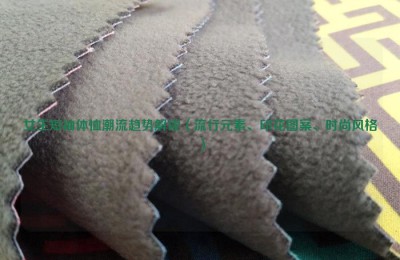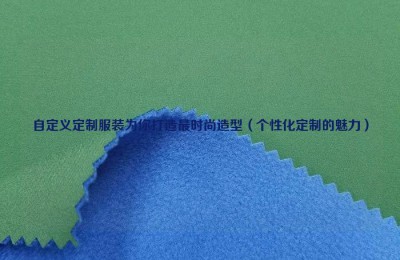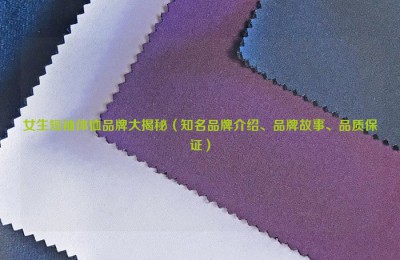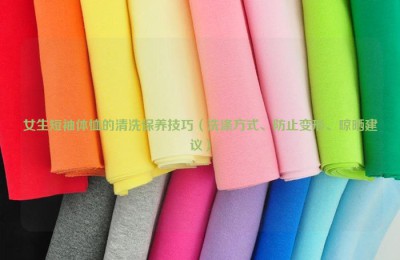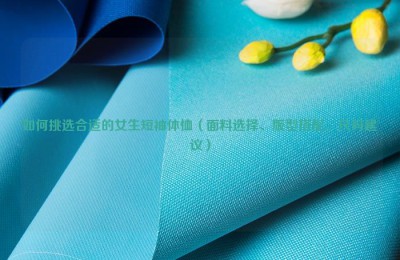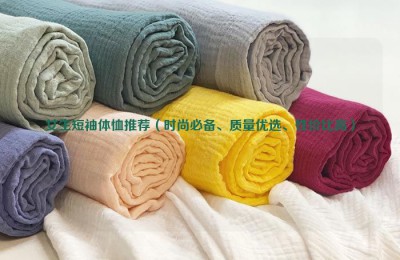What kind of “spark of love” will be created when the traditional textile industry joins hands with the digital economy?
In the “intelligent workshop” of Youngor Group’s headquarters in Ningbo, Zhejiang, four laser projectors project the fabric shapes of each part of the suit on a cutting bed more than 10 meters long in a 1:1 ratio. Workers on the side operate it skillfully. Hold the wireless keyboard and mouse and “arrange and combine” them in the air against the electronic screen. After confirming that it is correct, the automated cutting tool will “follow the pattern” on the cutting bed where the entire fabric has been laid out in advance. In 40 minutes, the fabric needed to make a suit can be cut…
Scenes like this happen every day. In the past, without the “blessing” of smart cutting machines, it would take about two days to complete a set of tailor-made tailoring of suit fabrics.
Digital empowerment is profoundly changing the textile industry. In recent years, with the surging wave of digitalization, the industrial Internet and intelligent manufacturing have been deeply integrated into various fields of the textile industry, giving rise to new technologies such as collaborative R&D and design, automated production, online monitoring, and shared manufacturing. Business formats, new models, and new scenarios. These digital, intelligent and automated technology applications have brought the textile industry and the digital economy closer and accelerated their integration.
Production efficiency has been significantly improved
From manufacturing to “intelligent manufacturing”, digital transformation has allowed the textile industry to reduce production costs and shorten production cycles
Currently, with an eye on empowering the real economy, the application scope of new generation information technologies such as 5G and industrial Internet continues to expand, which is profoundly affecting and changing the textile industry.
Through its self-built “Hongyun” industrial Internet platform, Jiangsu Shenghong Group can track the production, sales, inventory, loss data of each material, as well as equipment efficiency and energy consumption through the online system, and scientifically control the production process. The group can also connect suppliers, producers, distributors and customers through the industry chain collaboration platform to realize production, supply and marketing online, effectively ensuring the stability of corporate production and operations during the epidemic.
Intelligent production process is the core of intelligent manufacturing of Xinxiang Chemical Fiber Co., Ltd. Xinxiang Chemical Fiber aims at “automating a single piece of equipment, making the entire production line intelligent, and making comprehensive management intelligent”. It fully considers the development of automation and intelligence in the determination of new project plans and equipment selection, and has successively cooperated with Shanghai Jieka Robot Technology Co., Ltd. and the 22nd Research Institute of China Electronics Technology Group Corporation signed a strategic cooperation to jointly explore the application of new generation information technology in industrytransformation and upgrading, and promote the industry from traditional manufacturing to intelligent Manufacturing transformation.
“Changzhou Hongda’s gram weight system detection solves the gram weight measurement problem through digital technology and provides better support for enterprises to develop intelligent manufacturing.” Gu Ren, chairman of Changzhou Hongda Electric Co., Ltd., said that in the future, the company will Build an intelligent system for shaping machines based on artificial intelligence technology to solve the problems caused by relying on manual experience in production in the past, and build a digital “intelligent manufacturing” industry chain from the source.
In recent years, Huilong Garment Co., Ltd., Jiyang Street, Zhuji City, Zhejiang Province has actively promoted digital transformation. Through the simultaneous improvement of hardware and software in the digital workshop, the data of each assembly line can be displayed in real time on the company’s digital screen, which has not only improved production Efficiency also effectively reduces operating costs, product defect rates and product development cycles.
As early as 2016, Hongdou Group took the initiative to embrace the digital economy and launched the “Smart Hongdou” strategy. It successfully built a 5G+ textile and garment industry Internet smart factory with China Unicom, and was rated as a provincial-level smart workshop. The entire production efficiency has been improved. 20%, the unit consumption cost is reduced by 10%, the work in progress is reduced by 30%, and the production cycle is shortened by 30%.
Quality control is more precise
From the human eye to the “intelligent eye”, the digital quality inspection system makes defects nowhere to hide, making quality more guaranteed
Quality is the lifeline of textile enterprises. A simple and efficient quality inspection system is an important guarantee for textile enterprises to improve production efficiency.
At present, the vast majority of textile production companies in the world rely on manual visual quality inspection. This quality inspection method has a low detection rate, slow speed, and high cost. The cloth inspection speed is generally 15~25 cm/second. On average, a cloth inspector can find up to 180 defects in one hour, and the defect detection rate is only is 70%.
Shandong Ruyi Group carries out 5G applications in mobile office, video communication, data collection and other fields, and establishes an industry integrating real-time data, auxiliary decision-making and industrial APP Internet platform. The company integrates 5G technology, cloud computing, and artificial intelligence technology into the textile industry quality management system. The delay in transmitting high-definition gray fabric photos to the cloud intelligent analysis platform through the 5G network is shortened to less than 25 milliseconds. At a cloth inspection speed of 1 meter/second, The real-time detection response time is less than 100 milliseconds, the cloth inspection efficiency is greatly improved, and the defect detection rate can reach more than 95%, which is much higher than the traditional manual cloth inspection method. This quality inspection method not only saves labor costs, but also improves work efficiency and detection accuracy.
In order to realize the digitalization of fabric inspection, Jiangsu Sunshine Group passed the “machine inspection”Using the “recognition + artificial intelligence” method, we developed the “Wool Textile Inspection Intelligent Quality Inspection System”, which uses artificial intelligence visual recognition to collect and analyze the changes in wool product defects, conduct intelligent judgment and intelligent inspection of defects, and realize the transition from human eyes to machines. Eye. The system has an automatic memory function, which automatically remembers new defects and saves them to the database, making quality management more accurate.
The Henan base of the chemical fiber sector of Hengshen Group cooperates with China Mobile to collect production information such as production batches, production lines, and spinning positions of silk spindles, as well as real-time status of process parameters, winding reports, broken wire reports, alarm information, etc. The process data is transmitted to the nylon filament 5G+ industrial Internet platform in real time using the 5G network. In the balance room, the silk car information is read based on 5G + radio frequency identification technology (RFID) to realize the front-to-back connection of production factors; in the packaging process, industrial cameras are used to collect the product internal standard QR code information, and the information is transmitted to the cloud database through the 5G network. Verify to determine whether it meets the packaging specifications. Through the massive data storage function of the platform, Hengshen Group can trace the entire production process of a single product with one click, and complete functions such as product quality traceability and sales cross-selling tracking.
Customized services have broad prospects
From “formulation” to customization, digital empowerment enables tailor-made customization to scale, making the “buyer show” even more exciting
Digital applications have also brought broader development opportunities to clothing companies that are deeply involved in customized services.
“Buy, buy, buy” is the favorite of many female consumers, but trying on clothes is too troublesome, and online shopping is afraid that the “buyer’s show” will be too different from the “seller’s show”. In order to solve this pain point, Shandong Ruyi Group joined hands with Shandong Mobile to create a “5G smart fitting mirror” to help customers automatically try on clothes and change into new clothes instantly.
In order to allow consumers to “wear tailor-made suits without leaving home”, Heilan House Group Co., Ltd. quickly established a personalized customization smart factory for the clothing industry based on 5G+AI technology, with dynamic sensing Consumer demand has made a breakthrough in transforming the traditional textile and apparel industry’s “high inventory of production first and sales later” model into the “zero inventory of sales first and production later” model, gradually realizing “production on demand, zero inventory.”
Zhang Hongxia, deputy general manager of Tongniu Fashion Technology, who has been involved in the field of clothing customization for many years, said: “The company is committed to using digital applications to improve the synergy and professionalism of professional clothing customization from design, production to service, and solve the problem of traditional professional clothing customization. difficulties encountered and enhance the market competitiveness of enterprises.”
Tongniu Fashion’s digital solutions innovatively apply digital products such as vehicle-mounted mobile measurement systems and AI customization platforms to the R&D and design of professional group clothing to meet customers’ increasingly refined and personalized customization needs. In addition, Tongniu Fashion has also developed an “order control system” suitable for group clothing customization, which effectively simplifies the customization process and improves customer experience.
AAASDFERGTRHR

